Dashi is what gives the amazing “Umami” flavor to Japanese dishes and is a class of soup and cooking stock used in Japanese cuisine.
This liquid flavoring is essential in giving the right taste to miso soup, noodle broth, clear broth, and other kinds of liquid broth that require simmering.
A lot of Asian cuisines use dashi to underscore their flavor and dashi is integral to delivering umami.

To name a few of my favorite dishes, takoyaki and okonomiyaki are grilled foods that use dashi to form their tasty batter, which is made of flour.
You can actually make dashi at home with a few simple ingredients, and that’s also the most common and authentic form of dashi you could make.
But if you’re a vegetarian you might not want to, or if you don’t have time to get the proper ingredients you might not be able to.
In this video I look at the best substitutes you can use, definitely worth the time to watch it as you also get a lot of visuals on the type of thing you could use, or read on if you just want to get down into some of your favorites!
What makes a good dashi substitute?
Dashi delivers umami and is made from kombu (seaweed) and katsuobushi (fermented fish), so you want a substitute that can deliver umami. Chicken or white fish broths can, but a great vegan alternative would be to substitute the katsuobushi for shiitake mushrooms, another umami-rich Japanese ingredient, and keep the kombu.
Let’s get more into what dashi is and how you can use these substitutes in your dishes.
What is Dashi?
Dashi is made by simmering kezuribushi (preserved, fermented skipjack tuna shavings, also known as katsuobushi) and kombu (edible kelp) in boiling water for 3 – 5 minutes, then strain it leaving only the broth which is called, dashi.
Combining the flavors of katsuobushi and kombu in the broth unleashes the element of umami (one of the five basic tastes) into the dashi.
Bonito is a kind of tuna, and katsuobushi is dried, smoked bonito. Katsuobushi is often used as flakes shaved from a piece of dried fish.
This is actually kezuribushi, but we still call it Katsuobushi.
You can actually buy the main ingredients katsuobushi and kombu on Amazon these days:
Katsuobushi Kombu
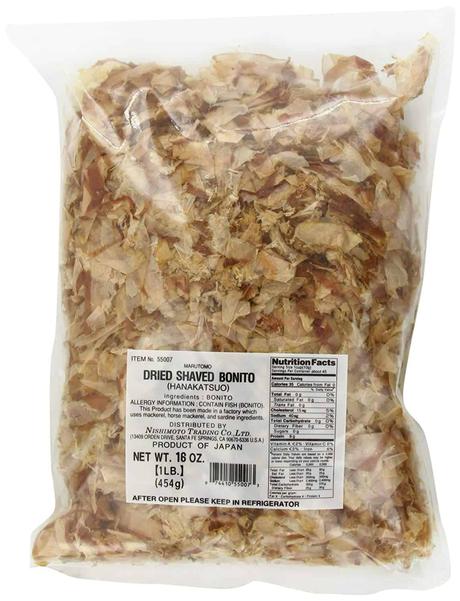
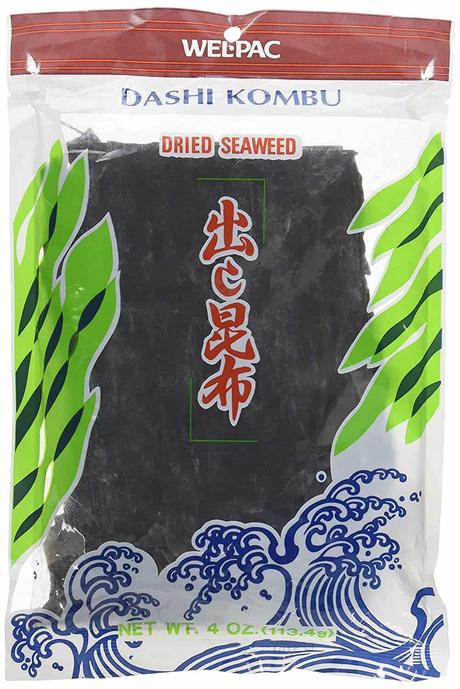
(view more images) (view more images)
The high content of sodium inosinate in the katsuobushi and the glutamic acids in the kombu creates a synergy of umami that’s very appealing to the taste buds on the tongue, which is why most people love it.
However, the homemade dashi is no longer that popular these days, even in Japan as it has been replaced by the granulated or liquid instant dashi since the end of WWII.
The added glutamates and ribonucleotides which are chemical flavor enhancers in the instant dashi is preferred by chefs due to it having a stronger and less subtle flavor compared to the homemade dashi.
I don’t make my own anymore and prefer to use this Ajinomoto – Hon Dashi for its rich flavor.
There are also other variations of dashi stock which include soaking shiitake, niboshi or kelp in plain water for long hours to extract their flavors, or by simmering them in 70 – 80° Celsius hot water and then straining the broth that you get out of it.
Kikunae Ikeda, a chemistry professor at Tokyo Imperial University, discovered the unusual and strong flavor of kelp dashi in 1908 and identified it as the “fifth flavor” of the umami.
According to him, the glutamic acid found in the kelp in dashi stimulates a specific human taste receptor.
What is Umami in dashi?
Umami is one of the five basic tastes that the human taste receptors react to and roughly translates as “pleasant savory taste”. It is one of these five taste types:
- sweet
- sour
- bitter
- salty
- or umami.
It has been described as savory and is characteristic of broths and cooked meats.
Believe it or not, until dashi was invented scientists didn’t know that humans had a specific taste receptor that reacts to the glutamate in the dashi.
In essence Professor Kikunae Ikeda discovered both the umami and the glutamic taste receptor in the tongue. Umami is roughly translated as “pleasant savory taste” and it was also Professor Ikeda that coined the term.
 This is a text overlay image of the original work Japanese green vegetable, dried bonito flakes, herring roe by City Foodsters on Flickr under cc.
This is a text overlay image of the original work Japanese green vegetable, dried bonito flakes, herring roe by City Foodsters on Flickr under cc.
5 best dashi substitutes
When you don’t live in Japan or in Asia, it can be a bit irritating to know that there aren’t a lot of Asian or more precisely Japanese stores that sell instant dashi or kelp or shavings of a fermented skipjack tuna for that matter.
If you’re a fan of Japanese foods like miso soup, katsu don, sukiyaki or oyakodon, then it might put you off because you won’t be able to cook your favorite Japanese meals.
Although you can actually order instant dashi online, it may take a few days before it arrives.
Still, that’s a good way to store as much dashi in the cupboard as possible for all your future preparations of Japanese delicacies.
Because you can use it in a lot of them.
Do not fret because there are actually alternatives to a dashi broth and you running out of dashi is the perfect time to try out dashi variants and replacements.
It may not be to your liking when trying out these alternatives for the very first time, especially since you’re accustomed to the taste of regular dashi, but in time you will find that the varying flavors are also good in and of themselves.
Even though the substitute may not be picked up by the taste receptors that are specifically tuned to the umami (glutamic acids), it can still be the next best thing and you might even prefer to use one of these substitutes when you are trying to have a vegan diet.
Here are the 5 best alternatives to dashi:
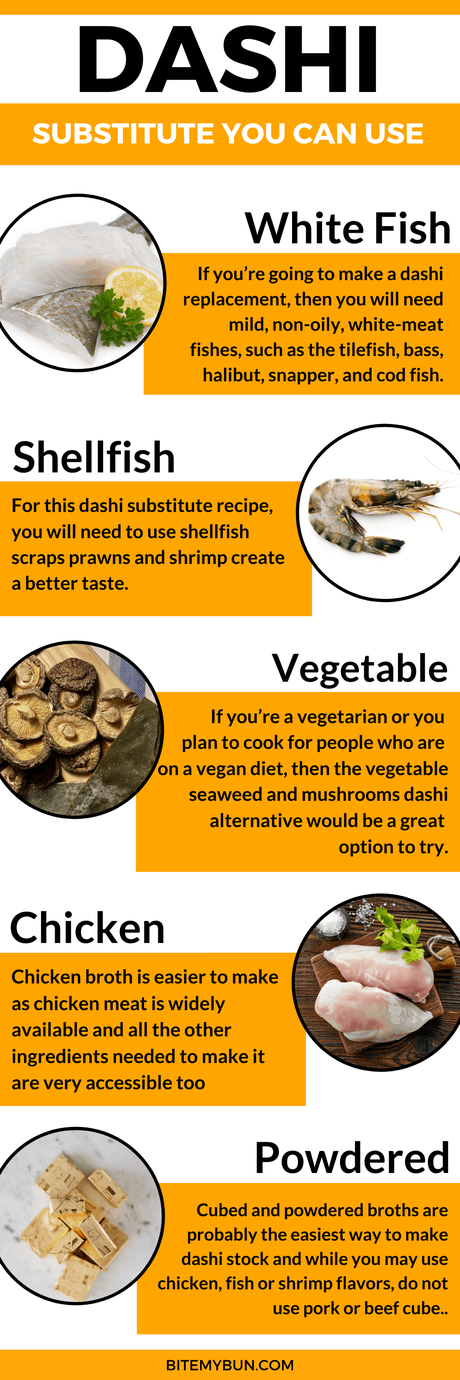
White Meat Fishes in dashi
Going by Japanese tradition, the washoku (和食) or Japanese cooking, they had originally intended for dashi to be made from fish or seafood broth.
If you’re going to make a dashi replacement, then you will need mild, non-oily, white-meat fishes, such as the tilefish, bass, halibut, snapper, and cod.
Do not use tuna or mackerel as these types of fish have stronger fish flavor and might dominate the overall flavor of the dish that you’re preparing.
Take note that dashi is just a flavor agent and while it gives the perfect taste to the meal, it does not in any way overtake it.
In order to get started, you’re going to need to get the parts of the fish that people don’t normally eat like the head and bones (you may also need a few pounds of flesh).
These meat scraps are actually free in the fish market, so you don’t necessarily need to spend money on this trip.
Once you’ve acquired the parts you need, then wash them thoroughly and make sure no traces of blood remain on them as they will turn the broth into a bitter juice.
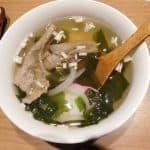 Print
Print
Dashi stock substitute recipe with white meat fish
Fumet is what you call a fish stock and at the basic level it is comparable to the dashi as the seafood taste is rooted deep within it. Course SoupCuisine Japanese Prep Time 10 minutesCook Time 1 hourTotal Time 1 hour 10 minutes Servings 8 people Author Joost Nusselder Cost $7Equipment
- Cooking pot
- Skillet
Ingredients
- 8 quarts water
- 1 tbsp vegetable oil
- 1 tsp tarragon
- 1/2 tbsp parsley
- 1 tsp fennel
- 1/2 cup celery finely chopped
- 3 cloves garlic minced
- 1/4 cup leek
- 1 large white onion
- 4 bay leaves
- 1/2 cup white wine
- 3 1/2 ounce white meat fish like halibut or bass
- 2 tbsp soy sauce
- 1 tbsp sugar
- 1 tsp mirin
Instructions
- Preheat the vegetable oil in a skillet and saute the aromatics which are the tarragon, parsley, fennel, celery, garlic, leeks, and onions. Cut the vegetables into very thin slices and tie the bay leaves in a string.
- Add the white meat fish in scraps to the mix and mix it around.
- Turn on the stove and pour 7 – 8 quarts of water in it, then boil it in high heat.
- Add the 1/2 cup of white wine to the aromatics. Make sure that the wine or water fill the skillet that it almost covers the fish scraps and cook for 1 – 3 minutes.
- Once done, then pour the aromatics and fish scraps into the 8 quarts of water that you’ve boiled earlier and add the 1 – 2 tbsp. of soy sauce, 1 tbsp of sugar and 1 tsp of mirin. Let it simmer for 1 hour.
- After you’ve let it simmer for an hour, then the fish broth substitute for dashi should be ready.
- Strain the mix and put it in a glass container and refrigerate it. You can store it in the freezer for up to a month before you use it.
Shellfish dashi replacement
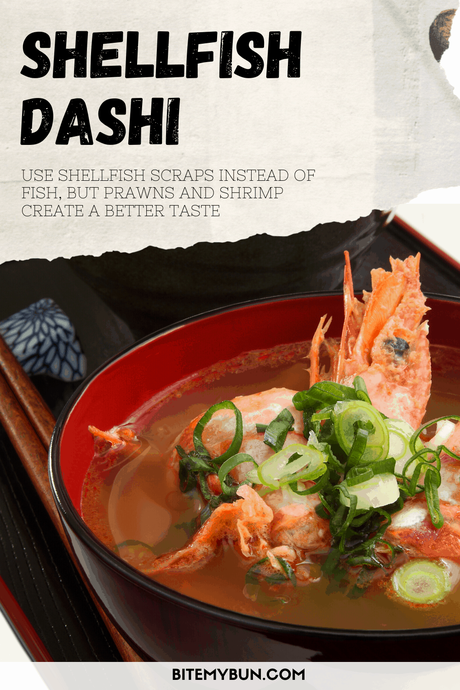
For this dashi substitute recipe, you will need to use shellfish scraps instead of fish, but prawns and shrimp create a better taste for this type of dashi than shellfish, so you may want to put preference on the shrimp.
How to make the shellfish stock:
- Dice your aromatics into small cubes and the garlic should be minced, these include the 2 cloves of garlic, 3 stalks of celery, 2 cups of carrots and 2 cups of onions.
- Turn on the stove and pre-heat 2 tbsp of olive oil in a large frying pan. Saute the aromatics (except the garlic) together with the 1 lbs. of large shrimp scraps raw. Cook for 15 minutes or until they turn brown in color.
- This time toss in the garlic and stir-fry the whole mix for another 2 minutes.
- Then add the 1 and 1/2 quarts of water, 1/2 cup of white wine, 1/3 cup of tomato paste, 1 and ½ tsp. of black pepper (freshly grounded), 1 tbsp. of kosher salt and 10 sprigs of fresh thyme (stems not removed).
- Allow the recipe to boil and simmer for an hour.
- Once cook, then turn off the stove and pour the recipe onto a medium-size bowl as you let everything pass through a sieve. Extract only the juice/broth that’s made from it, discard the rest.
- You now have made a perfect shellfish/shrimp dashi broth. Store it in your fridge and use it sparingly for any dish that requires dashi in the future.
Vegetable vegan dashi recipe
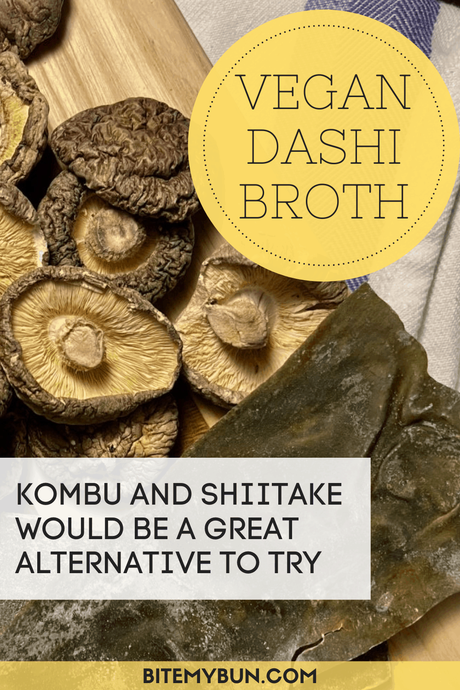
If you’re a vegetarian or you plan to cook for people who are on a vegan diet, then the vegetable seaweed and mushrooms (kombu and shiitake) dashi alternative would be a great option to try.
How to make a vegan dashi broth:
- Use dried mushrooms and seaweed for this recipe and follow the instructions on the kombu pack.
- Get a clean empty pot, pour 4 cups of water into it and then let the seaweed sit in it for about 30 minutes (do not turn on the stove yet).
- Check the taste of the water by using a spoon (the seaweed should turn the water into some kind of tea) and check the seaweed too if they feel somewhat slippery.
- Once you’ve soaked the kombu for 30 minutes, then it’s time to turn on the stove and boil it in high heat. Boil for 25 minutes.
- Since you’ve only put 4 cups of water into the mix, you may want to also check if the water evaporates too quickly and replenish it to get the desired amount of broth.
- As for the mushroom stock, you just do what was done with the seaweed and soak it in 4 cups of water also for about 30 minutes.
- Only this time though you don’t need to boil the mushrooms and you simply need to pinch the mushrooms to get that strong umami flavor (if you feel the mushrooms are soft enough, then that’s the time they’ll be ready).
- Remove the mushrooms and finally, you can add the two liquids together for a strong vegan dashi umami taste.
Unlike the kombu, however, you can reuse the mushroom for up to 10 times before throwing them away, so that means you can make a lot of mushroom dashi substitute.
Place the mushrooms in a plastic bag and put them in the freezer for future use.
Now, you can’t get the Shiitake mushrooms everywhere, but fortunately Amazon ships these Dried Shiitake Mushrooms so you can use those in your stock:
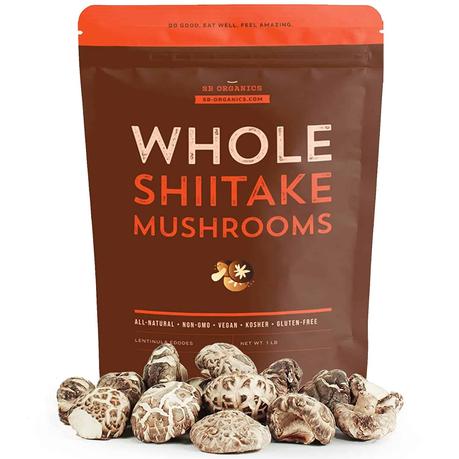
(view more images)

Other vegetables that are also good to make dashi from are sundried daikon and sundried carrot peelings.
These vegetables contain basal umami (free glutamate) which are good dashi alternatives.
If you wish to experiment further with other vegetables and herbs to make a dashi substitute, then visit the Umami Information Center for more details.
Chicken Broth dashi substitute
Chicken broth is easier to make as chicken meat is widely available and all the other ingredients needed to make it are very accessible too!
How to make the chicken dashi stock:
(Ingredients)
- 1 3 lbs. chicken, or use parts, such as wings and backs
- 4 stalks celery, (with leaves), trimmed and cut into 2-inch pieces
- 4 medium carrots, peeled and cut into 2-inch pieces
- 1 medium onion, peeled and quartered
- 6 cloves garlic, peeled
- 1 small bunch fresh parsley, washed
- 6 sprigs fresh thyme, or teaspoon dried
- 1 teaspoon kosher salt, or to taste
- 4 quarts cold water
Cooking Instructions:
- Turn on the stove, set to medium-high heat, set a large cooking pot over it and put all the aromatic ingredients in it (4 quarts of cold water, salt, thyme, parsley, garlic, onion, carrots, celery, and chicken). Bring to boil for about 30 minutes and then reduce temperature to medium-low, cover with the lid and simmer for 2 hours until the chicken falls apart. Skim the foam from the surface as it builds up.
- Strain the broth through a large sieve or colander into a large bowl. Once cooked, take a big sieve and strain the broth into a large bowl. Press the recipe using a wooden spoon as much as possible to get all of the broth.
- Pour the broth in a pint glass jar (4 pieces), cover them with lid and refrigerate overnight. Now you’ll have lots of chicken dashi stock in reserves to use for all your future recipes that may require it.
Powdered or Cubed Broth dashi substitute
Cubed and powdered broths are probably the easiest way to make dashi stock and while you may use chicken, fish or shrimp flavors, you should never use pork or beef cube or powdered broth as they will not only accentuate the taste of your dish but instead overpower it.
Salt, monosodium glutamate, hydrolyzed soy/corn/wheat gluten protein, hydrogenated cottonseed oil, beef fat, and many more are just some of the ingredients in a beef broth cube.
Too much beef fat and MSG (monosodium glutamate) give the broth cube its strong flavor, but even natural beef broth extracted from fresh cow’s meat still has the same effect.
So it’s best to steer away from those and pork flavored cubes altogether.
Dashi Substitutes for Some of Your Favorite Japanese Dishes
Technically all the ingredients for homemade dashi are easily accessible in Japanese and most Asian grocery stores; however, there may be times when they too will run out of stock or the new ones they’ve ordered haven’t arrived yet.
Fortunately for you, the dashi replacements discussed above should come in handy for situations such as this, especially if you can’t wait for the original ingredients used for dashi to become available anytime soon.
Below are some of the delicious recipes that you can prepare with any of the dashi stock alternatives mentioned above.
Miso Soup
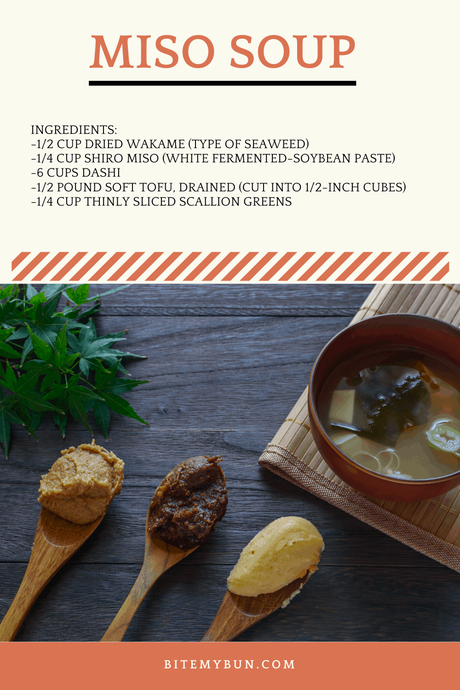
Ingredients:
- 1/2 cup dried wakame (a type of seaweed)
- 1/4 cup Shiro miso (white fermented-soybean paste)
- 6 cups Dashi
- 1/2 pound soft tofu, drained and cut into 1/2-inch cubes
- 1/4 cup thinly sliced scallion greens
Cooking Instructions:
Prepare wakame:
Get a large bowl and pour cold water into it. Make sure the water covers 1 inch thick from the bottom of the bowl and put the wakame in it, then soak for 15 minutes. Afterward, drain the water using a sieve.
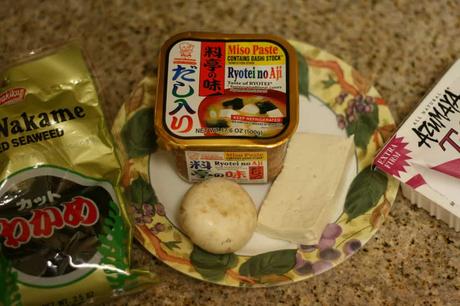
Make soup:
- Stir together miso and 1/2 cup dashi in a bowl until smooth.
- Turn on the stove and set to medium-high heat and pour the dashi until it’s hot.
- Toss the tofu in as well as the wakame broth and simmer for 1 minute stirring occasionally.
- Turn off the stove and pour the miso mixture into the tofu, wakame, and dashi. Stir thoroughly and then add the scallions and serve.
Katsudon (with Rice)
Ingredients:
- 2 center-cut, boneless pork chops (pounded down to a centimeter thick)
- Salt
- Pepper
- 2 eggs (beaten, divided)
- Flour (for dusting)
- 1 cup panko
- Oil (for frying)
- 1 onion (thinly sliced)
- 1 1/4 cup dashi soup stock
- 1/3 cup soy sauce
- 2 tablespoon mirin
- 1 tablespoon sugar
- 4 cups Japanese steamed rice
Cooking Instructions:
- Drizzle with salt and pepper the pork chops that’s been pounded.
- Dust with a light, even coating of flour.
- Get a small bowl and beat 1 egg in it, then put the panko in another small bowl.
- Preheat the skillet over medium heat and pour the cooking oil in it until it gets hot.
- Dip the pork into the egg to coat.
- Coat the pork well with panko breadcrumbs in order to prepare it for sauteing.
- Slowly drop each pork chop into the hot oil in the skillet and saute it for 5 – 6 minutes on each side until they become golden brown.
- Prepare a large plate and put some paper towels on top of it, then place the fried pork chops over it to drain the oil off of the meat.
- This time slice the tonkatsu into tiny bits.
- Get another frying pan and pour the dashi in it, then cook over medium heat.
- Add sugar, mirin and soy sauce to the dashi soup and wait until it boils, then turn off the stove.
- In order to prepare 1 serving of katsudon, do the following: turn on the stove and pre-heat the small skillet over medium heat, then pour 1/4 cup dashi soup plus 1/4 onion slices into the skillet and allow to simmer for 1 – 3 minutes.
- Then add 1 serving of tonkatsu pieces to the dashi soup mix in the skillet and simmer again for 1 – 3 minutes.
- Wait until the dashi soup boils, then pour the beaten egg that you’ve set aside earlier over the tonkatsu and onion.
- Set temperature to low and cover skillet with a lid. After 60 seconds turn off the stove.
- Put 1 tonkatsu on top of a large rice bowl with steamed rice and serve.
Oyakodon
Ingredients:
- 1/4cup (60ml) Dashi
- 1/2 tbsp sugar
- 1/2 tbsp Sake
- 1 tbsp soy sauce
- 1/2 tbsp Mirin
- 1/4 onion, thinly sliced
- 1 chicken thigh, cut into bite-size pieces
- 1 egg
- 1/2 green onion, thinly sliced
- Steamed rice
Cooking Instructions:
- Turn on the stove, put the frying pan atop and set to high heat. Add mirin, soy sauce, sake, sugar, and dashi, then bring to boil.
- Toss in the onion and stir-fry for 1 minute on medium heat.
- Add the sliced chicken and cook for 5 – 6 minutes or until they turn golden brown.
- Get a small bowl and beat the egg in it. Pour the scrambled egg over the chicken and onion mix in the frying pan, cover with a lid and cook for another minute.
- Transfer the oyakodon into a rice bowl, add sauce and sprinkle with green onions, then serve.
Also read: Japanese foods like Sushi and Gyoza are more popular then ever
Q&A around Dashi
Here we have our answers to the most common questions around Dashi we didn’t get around to answering in the main post:
Is Dashi the same as fish sauce?
While there is fish in Dashi, it’s not the same as fish sauce.
Fish sauce is often made from anchovies, salt, and water and has a strong salty taste. Dashi is made from seaweed (kombu) and fermented dried tuna (bonito flakes).
Is Dashi the same as bonito?
Dashi is not the same as bonito, rather bonito is one of the ingredients to making Dashi, next to dried seaweed (kombu).
Is Dashi the same as miso?
Miso is not the same as Dashi, though they are both used to make Miso soup. Dashi is a broth made from dried fermented tuna and dried sheets of seaweed and Miso is a paste made from fermented soybeans.
What can I substitute for bonito flakes?
To get the bonito flavor you can substitute them with some shellfish, preferably shrimp or prawns. A vegan option could be to use Shiitake mushrooms to add umami to your dish.
How long does dashi last in the fridge?
You don’t have to use all of your Dashi at once right after you’ve made it. You can save Dashi in a closed container but you have to put it in the fridge. It will keep for around 7 days or you can keep it in the freezer where it will last 3 weeks.
Is dashi kosher?
Normally no, the bonito is dried tuna. And while tuna is a fish that can be used in the kosher kitchen, the dried bonito flakes that are used in dashi are not certified kosher.
And since it’s very hard to make that yourself, and the shrimp or prawns substitute won’ t do, you can make it with the grilled skin of whitefish for flavor.
Can you buy Dashi at the Grocery store?
Unfortunately, you can’t buy Dashi at the normal grocery store, even most of the Asian Grocery stores don’t sell it. You can purchase Dashi from most Japanese stores and a wide variety of online stores that deliver across America.
You can buy Hon dashi stock, which is great:
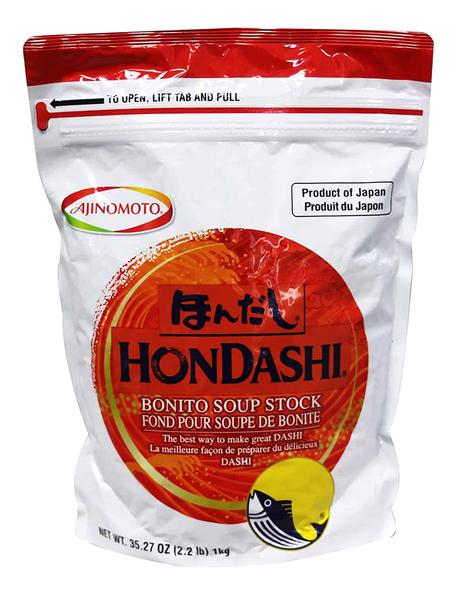
(view more images)
Read more: traditional Japanese Robata grilling
